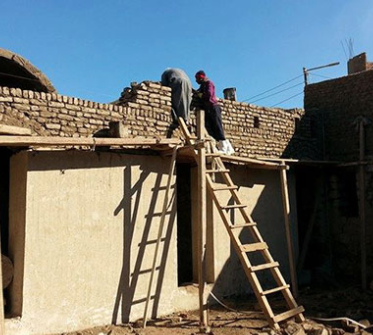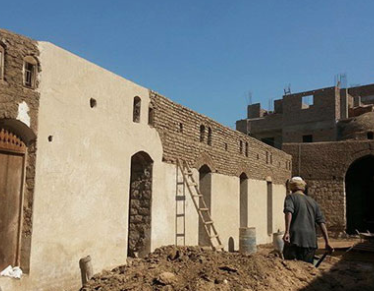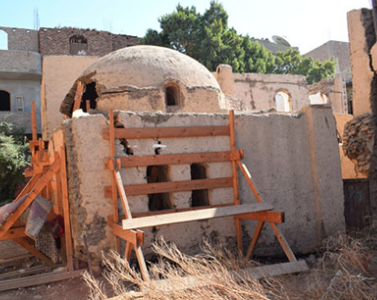CAIRO – 26 November 2020: Great support is received by the village of the great historical engineer Hassan Fathy, which is located in the city of Qurna, west of Luxor, to continue its development and raise the efficiency of the historical buildings inside it from the village’s mosque, theater, the ancient heritage buildings and rooms belonging to the great artist and engineer of world fame in Egypt and around the world.
Tariq Wali recently started his work to restore the rest of the village, under the mandate of UNESCO, which is responsible for the restoration and development of the village to preserve its global history in southern Upper Egypt.

In this regard, engineer Tariq Wali, who specializes in architecture and heritage affairs, visited the village of New Qurna and the historic village of Engineer Hassan Fathi to inspect it, accompanied by a delegation of Egyptians and Arabs working in the village’s center, in an attempt to develop, restore and protect it.
It has been decided that work will be carried out by the Tariq Wali Center for Architecture and Heritage in the Al-Khan Building, the Mosque Building, the Theater Building, the Dar Al-Amoudeya Building, Hassan Fathi Residence, the historic Al-Tahtib Square in the village, and the Village Crafts Gallery and the Old Market.

The Tariq Wali Center for Architecture and Heritage announced that work has begun to revive the Khan building in the village by removing plantations and debris west of the building and addressing their negative impact on it, in addition to reducing the street level around the building to restore the original level of the site, the establishment of a drainage system surrounding the building to prevent the arrival of water pools, exposing the foundations of the building, treating them and supporting them with concrete, treatment of domes and vaults, structural strengthening and restoring the original design of the southern area, work on internal and external finishes and work on technical equipment.
This includes drainage, feeding, electricity and lighting networks, in addition to mobile and internet services and removing the occupations, restoring the infringed parts to the west of the building, and reopening the southern corridor.

Engineer Tariq Wali presented the restoration plan to a consultant for the restoration project of New Qurna, stressing that the project is a big dream going on to restore the history of the great engineer Hassan Fathy and preserve the basic character of the village, as the village has suffered for 70 years from many factors of deterioration, and there have been some encroachments on the village, demolition and reconstruction operations, in addition to the demolition of some buildings and facilities.
UNESCO announced the launch of the project to restore the New Qurna with all force in 3 stages.
The architectural engineer Hassan Fathy was born on March 23, 1900, in the Governorate of Alexandria, to a wealthy Egyptian family, and at the age of eight he moved with his family to reside in Helwan, south of Cairo.
He lived all his life in a house in Darb el-Labana, in the Citadel neighborhood in Cairo. He was affected by the countryside and the situation of farmers during a visit villages at the age of eighteen.
He wanted to be an agricultural engineer, but he could not answer the entrance exam, so he obtained a diploma in architecture from present day Faculty of Engineering, in present day Cairo University in 1926.
After his graduation he worked as an engineer in the General Administration of Schools in the municipal councils (now local councils). His first work was Talkha Elementary School in rural Egypt, from which his interest in rural architecture or as he used to call it “Architecture of the Poor.”
Comments
Leave a Comment